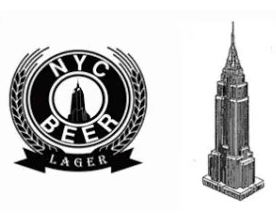Trademark protection of architectural design

A discussion on trademark protection of architectural design will typically begin with the Empire state building. It is because the building owned by a private firm secured its trademark early in 1931 and has enjoyed various economic benefits through the trademark protection for almost 80 years. Followed by the building, few other famous constructions like Eiffel Tower (at night when the lights are aglow) in Paris and Opera house in Sydney have also secured the trademark protection for their architectural design. However, India with numerous architectural marvels that are owned by an individuals or companies have not gained any trademark protection for architectural design until recently.
On June 19th, the Indian Hotels Company Ltd (IHCL) that owns The Taj Mahal Palace was granted a trademark for the hotel’s unique architectural design such as the red-tiled Florentine Gothic dome and the grand exterior. The Taj Mahal Palace is the first building of its kind in India to secure a trademark for its architectural design. India’s iconic luxury hotel, The Taj Mahal Palace that was built in 1903, has hosted numerous famous personalities and dignitaries from different parts of the world and is highly recognizable throughout India. Acquiring trademark registration was not cumbersome as the hotel already met the various prerequisites. In the backdrop of this registration, we discuss various aspects of Trademark protection of an architectural design.
How can a building secure Trademark protection?
- The first and foremost rule to apply for a trademark protection for an architectural design is that the building should be either owned by an individual or a company.
- The building should be distinctive which means that the building should be easily recognizable by many people.
- The building should represent a brand that associates a product or service to a source.
Once trademark protection is secured, the building or architecture can enjoy many economic benefits and prevent others from exploiting the architectural design and take advantage of it.
What can be called a trademark violation of an architectural design?
There are few aspects to judge a trademark violation:
- The use of the trademarked building should be non-editorial. A building’s image published on a newspaper wouldn’t violate trademark. Whereas, an image of a building used to advertise another product could violate the trademark.
- The use of the trademarked building to endorse identical or deceptively similar goods or services by third party may be considered infringement. Mc Donald’s in its advertisement for promoting burgers, cannot use an image of a KFC restaurant in the advertisement as it may lead to confusion among consumers.
Economic benefits of trademark protection: Empire state building vs NYC beer – A case study
A building with a unique and a widely recognizable architectural design can apply for a trademark to prevent others from exploiting the economic benefit of the architectural design. For example, in the year 2016, ESRT Empire State Building LLC who owns the trademark of Empire state building since 1931, filed an opposition for the grant of trademark that was filed by NYC Beer for its alcoholic beverages.
The opposition application filed by ESRT Empire State Building LLC was based on the grounds of trademark dilution, likelihood of confusion and false suggestion of a connection with Empire state building. According to US law, the trademark dilution is proved and accepted if the trademark is recognized and famous. As a result, ESRT Empire State Building LLC was successful in winning the opposition as the building attracts millions of tourists and visitors every year and is easily recognizable by public. Also, the building management stated that, a gift shop in the building also sells few alcoholic and non-alcoholic beverages as a souvenir for the visitors. So, the NYC beer may be confused by people with the ones that is sold by the gift shop. The trademark protection, helped the Empire state building to hold its recognition and prevent any misuse of it by any other companies.
Scope of trademark protection of architectural design of a building
Sydney’s Opera House, the Empire State Building and The Taj Mahal Palace hotel could easily secure a trademark protection, as they fulfil all the prerequisites and are owned by private entities.
For some, it might be surprising that how Eiffel tower being a public property, managed to secure a trademark. Surprisingly, the Eiffel tower does not hold a trademark for its architectural design but for the lighting design. The Société d’Exploitation de la Tour Eiffel, the organization managing the structure defends the trademark protection saying that the lighting is an artistic work which is separate from the structure itself. Thus, an architectural design need not necessarily be a structural, instead it can be any other possible architectural design.
For example, Apple, the world’s famous and recognized electronic gadget manufacturer secured a trademark for its “architectural design of Apple stores” from USPTO on January 24, 2013. It is to be noted that every Apple store cannot be structurally same as they are in various places under various space constraints. However, the trademark protection is not for the structure but for the store’s layouts, with their open spaces and symmetrically arranged displays. The trademark protection of “architectural design of Apple stores” helps Apple to legally act against duplication of the “look and feel” of its stores by any of its competitors.
The Trademark protection of an architectural design helps many private firms protect the various aspects of their buildings and structures. It is good to see that Indian firms are also understanding the benefits of trademark protection and trying to get benefit out of their architectural designs.
We hope this article was a useful read.
Please feel free check our services page to find out if we can cater to your requirements. You can also contact us to explore the option of working together.
Best regards – Team InvnTree
This work is licensed under a Creative Commons Attribution-NonCommercial 3.0 Unported License

 Follow
Follow




Leave a Reply